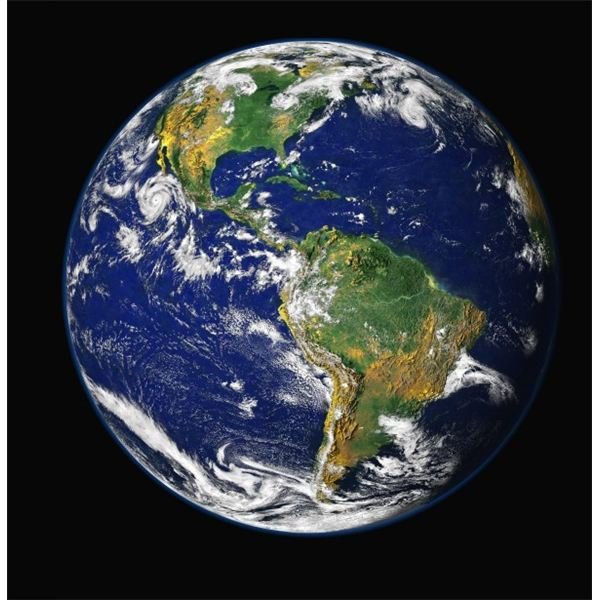Earth's Atmosphere Vocabulary Terms
Earth’s Atmosphere Vocabulary
Air pressure: the force resulting from a column of air pressing down on an area. As altitude increases, air pressure decreases (the
higher you go, the lower the air pressure).
Altitude: height above sea level.
Atmosphere: the layer of gases that surrounds Earth; Earth’s atmosphere is made up of 78% nitrogen, 21% oxygen, and small amounts of other gases, including carbon dioxide and water vapor. Earth’s atmosphere makes life possible by providing gases such as oxygen and carbon dioxide needed for living things, trapping energy from the sun to keep the surface warm, blocking harmful UV rays, and preventing most meteoroids from hitting the surface.
Conduction: transfer of heat by direct contact.
Convection: transfer of heat by the movements of a fluid. Both liquids and gases are fluids, so air is a fluid, and heat can be transferred through the atmosphere by convection. Warm air is less dense than cold air, so warm air rises, and this moves heat through the atmosphere.
Electromagnetic radiation: a form of energy, such as light, that can travel through space. Radio waves, microwaves, infrared, visible light, ultraviolet, X-rays, and gamma rays are all forms of electromagnetic radiation; they only differ in the length of their wavelengths. For more information about the electromagnetic spectrum, see NASA’s Imagine the Universe!
Exosphere: the outermost (top) layer of Earth’s atmosphere, from the top of the thermosphere to where the atmosphere merges into outer space.
Greenhouse effect: the process by which heat from the sun is trapped by gases in Earth’s atmosphere. Solar energy is absorbed by gases such as carbon dioxide and water vapor, and re-radiated as heat.
Infrared radiation: a type of electromagnetic radiation that has wavelengths longer than visible light.
Layers of the atmosphere: Earth’s atmosphere is divided into 5 layers. In order starting from the bottom, they are: troposphere, stratosphere, mesosphere, thermosphere, and exosphere. The gases that make up the atmosphere are thickest nearest Earth’s surface, and get thinner with increasing height. For more information on the layers of the atmosphere, see Windows to the Universe.
Ozone: a form of oxygen that has three oxygen atoms in each molecule.
Ozone layer: ozone that is in the stratosphere, between about 6 and 30 miles above Earth’s surface; the ozone layer protects life on Earth by absorbing much of the sun’s harmful UV radiation.
Mesosphere: the middle layer of the atmosphere, between the stratosphere and the thermosphere. The mesosphere extends from the top of the stratosphere to an altitude of 85 km (53 miles). Meteorites burn up in the mesosphere.
Radiation: the transfer of energy through empty space; energy from the sun reaches Earth by radiation.
Smog: a form of air pollution caused by burning fossil fuels.
Stratosphere: the second-lowest layer of Earth’s atmosphere, where the ozone layer is located. The stratosphere extends from the top of the troposphere to an altitude of 50 km (31 miles).
Thermosphere: the layer of Earth’s atmosphere above the mesosphere, where the aurora borealis occurs. Satellites and the space shuttle orbit in the thermosphere. The thermosphere starts at the top of the mesosphere and extends up to an altitude of between 500 and 1,000 km (311 to 621 miles).
Troposphere: the lowest layer of Earth’s atmosphere, in which we live. This is where clouds and weather occur. It extends from Earth’s surface to an altitude of 7 to 20 km (4 to 12 miles).
Ultraviolet radiation: a type of electromagnetic radiation that has wavelengths shorter than visible light.
